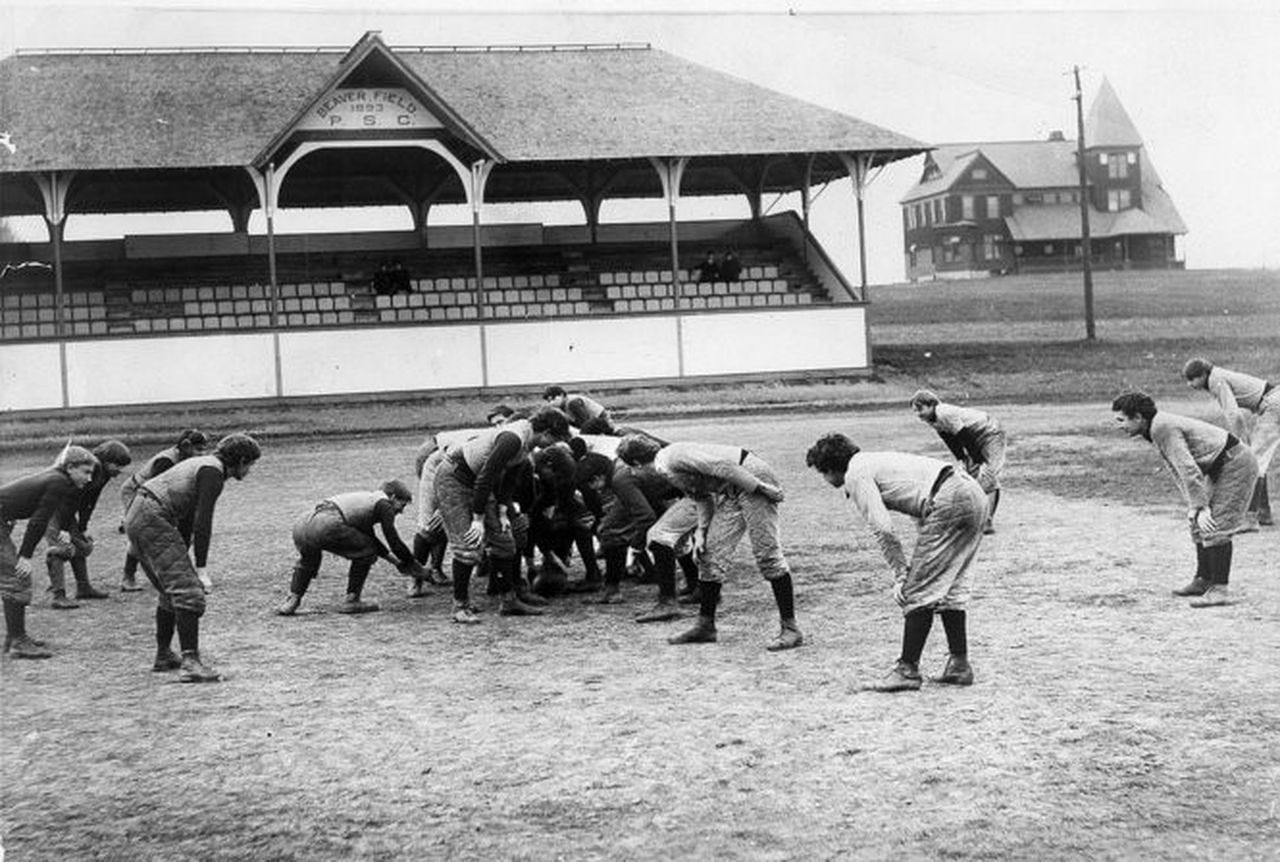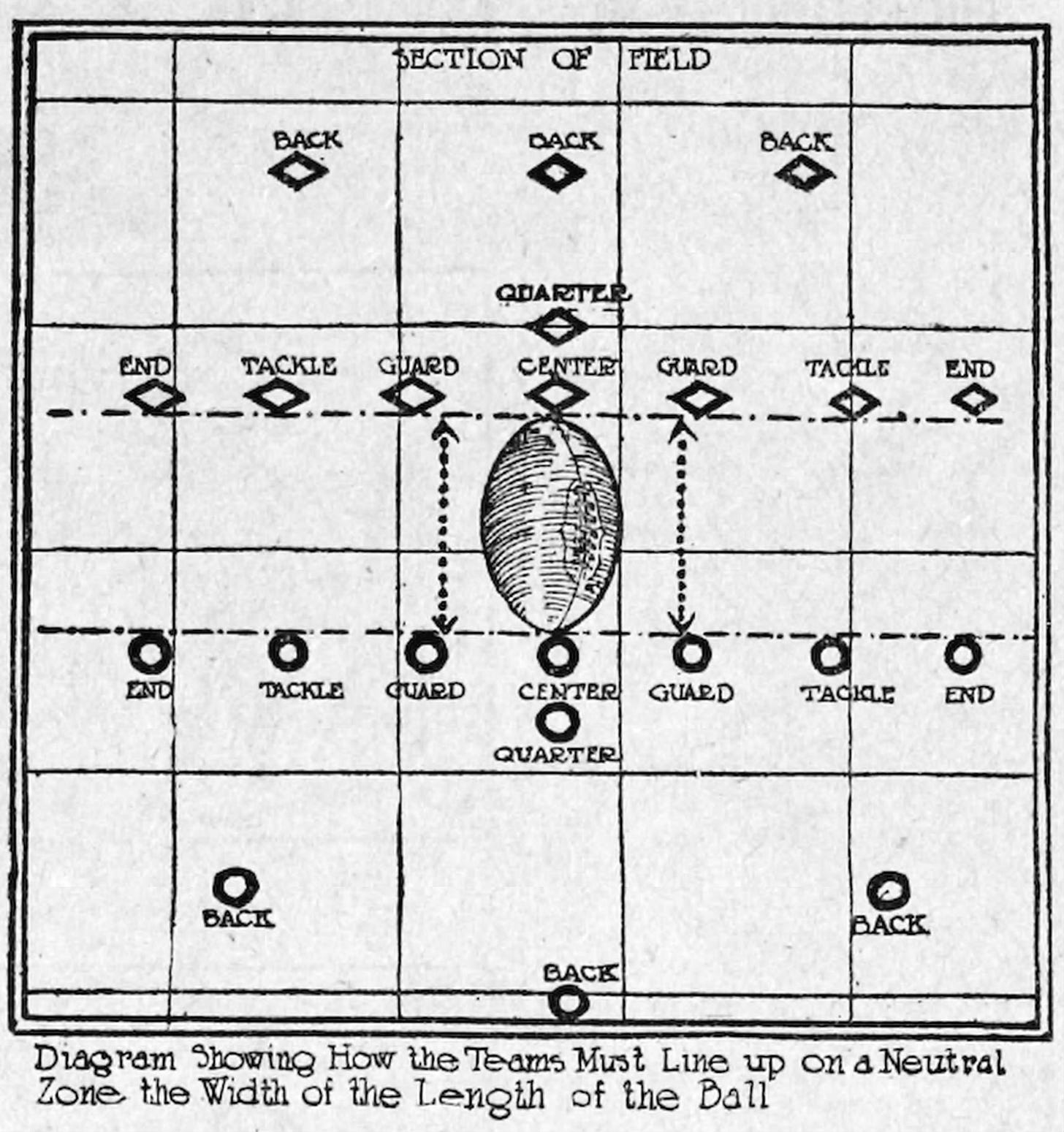Today's Tidbit... Football's Lines of Scrimmage
We often hear about players being offside and violating the line of scrimmage, but many football fans do not realize that American football has two lines of scrimmage or how and when the lines of scrimmage came about. Of course, we'll cover both issues here.
America's first football rules arrived in 1876 when the Intercollegiate Football Association adopted a slightly modified version of the Rugby Union rules. Among the modifications were swapping the term scrimmage for scrummage, as occurred with Rule 11:
A scrimmage (scrummage) takes place when the holder of the ball, being in the field of play, puts it on the ground in front of him, and all who have closed around on the respective sides endeavor to push their opponents back, and by kicking the ball, to drive it in the direction of the opposite goal-line.
Rugby/football at the time was a pushing/kicking game in which a maul or scrum of players in which they advanced the ball by kicking it toward the opponent's goal. Sometimes, the ball leaked out of the group, allowing a player to pick it up and run with it. Four years later, American football adopted the rule of possession and controlled scrimmage in which the team possessing the ball snapped it back using the foot. (The snapper continued having the option to kick the ball forward until 1910, but they took that option only in trick play situations.)
Despite having a controlled scrimmage, there was much less control along the lines than today. As in rugby, the forwards (aka linemen) continued pushing and shoving one another, and players on the defensive side often interfered with the snapper, including knocking the ball away from him. The shoving matches regularly led to retaliatory slugging, leading slugging to be outlawed in 1884, though it did not end there. Football had only one referee and one umpire, and with the opposing forwards standing close to one another, it was difficult to spot punches.
Walter Camp suggested separating the rush lines by five yards in 1885, but the Rules Committee did not approve his suggestion, so the scrimmage area remained crowded and subject to disorderly conduct.
Order finally came to the scrimmage line in 1906 as one of many measures to eliminate roughness from the game. The rule makers established two imaginary lines of scrimmage running from sideline to sideline and intersecting the tips of the ball. The snapper or center was the only player allowed to penetrate the neutral zone, and the defensive team was barred from interfering with the snapper.
Forcing 21 of 22 players to position themselves behind their lines of scrimmage provided:
Visual clarity for the linesman.
Making stray punches and other violations easier to see.
Allowing them to penalize violators.
The Canadian Rugby Union instituted a one-yard "scrimmage zone" in 1907. The offensive team must remain behind the ball while defenders must stay behind an imaginary line one yard from the same point (the tip of the ball farthest from the goal line they are defending.
I hope that clears things up for you.
Football Archaeology is a reader-supported site. Click here for options on how to support this site beyond a free subscription.






The rule made it possible for that gent to view opposing lines clearly, during a pre-WWI H/Y game. Every face was bloodied. "It was the most beautiful thing I ever saw."